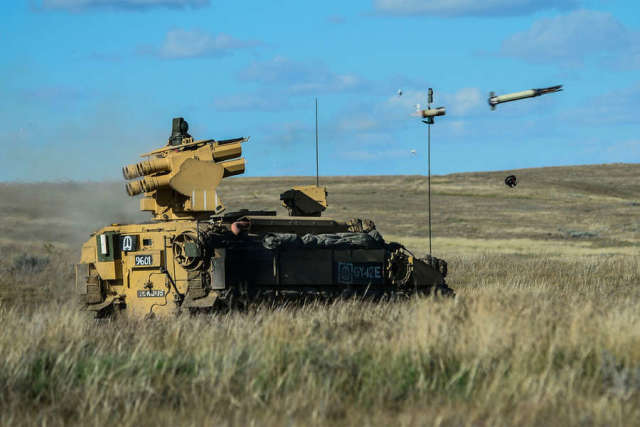Experts explained why the British authorities announced the supply of Stormer HVM armored cars to Kiev
The British government plans to transfer Stormer armored cars equipped with a portable anti-aircraft missile system (MANPADS) Starstreak to Ukraine. This was reported by several British media with reference to government sources. "Newspaper.Ru" figured out how this complex works and why the APU needs it.
Stormer HVM are small armored cars with Starstreak surface-to-air missile launchers installed on them. They began to be produced back in the 1970s, and guided anti-aircraft missiles were installed on them in 1986.
These missiles can be launched not only from a tracked installation, but also from a portable one, like a Stinger. Unlike its American counterpart, Starstreak has a separable warhead that hits the target with three fragmentation shells. In flight, the rocket develops a speed of up to Mach 3.5 and can hit a target from a distance of 6 thousand meters.
Another difference from the "Stinger" is that the missile is guided not by the thermal trace of the target, but by a laser beam. This makes heat traps and smoke screens useless, but requires keeping the beam on the target during the rocket flight.
Alexander Khramchikhin, deputy director of the Institute of Political and Military Analysis, believes that British anti-aircraft systems will not make a serious change in the balance of forces in a special military operation in Ukraine.
In turn, Alexander Ermakov, an expert of the Russian Council on International Affairs (INF), noted that the appearance of Stormer HVM among Ukrainians will not change the behavior of Russian pilots and the nature of attacks on Ukrainian military facilities. To protect themselves from missiles, they will have to use heat traps and perform evasive maneuvers, as before.
"The behavior of Russian pilots will not radically change these complexes. They initially proceed from the fact that the enemy has a large number of MANPADS," Ermakov said.
At the same time, according to him, unlike a manual complex with a similar missile, an armored vehicle has more ammunition and better means of detecting a target, but the large size turns an armored personnel carrier into a more visible target for combat aircraft.
"Unlike an infantryman with MANPADS, who is not vulnerable to aviation, since it is difficult to notice an individual, this "small tank" is much more visible. The main advantage of portable complexes is that, in fact, it is impossible to fight them before they are launched. It is very difficult to destroy them before launching - to do this, you need to track an individual where he will hide - in bushes or between buildings. And the tracked platform, it turns out, is a more vulnerable target. This is already a more distinct object for aviation, which it can hit beyond the range of MANPADS," Ermakov said.
He also believes that in the current conditions of combat, tracked complexes are worse than portable complexes, since they require a trained crew and maintenance. "Such things are good when they are part of a layered defense, and in this case it is not so," Ermakov added.
A military expert, retired Air Defense Major General Vladimir Sedov agrees with this point of view.
"Such systems work perfectly in sync with other air defense and missile defense systems. When there is a solid echelon that covers the sky. So, threats at distant borders should reflect the S-300-type systems that the APU had, then systems like the Buk anti-aircraft missile system, which Kiev also had. And only at the last stage can portable systems like Starstreak or the Russian "Willow" work. Now the APU has lost most of the S-300 and Buk. They do not control the sky, they cannot work on distant echelons. In these conditions, British anti-aircraft guns will not help Ukraine. This is PR, not support," Sedov said.
At the same time, according to Ermakov, in the event of the start of deliveries, the British complexes will get to the battlefield no earlier than in a month.
Ermakov concluded.
Denis Telmanov

